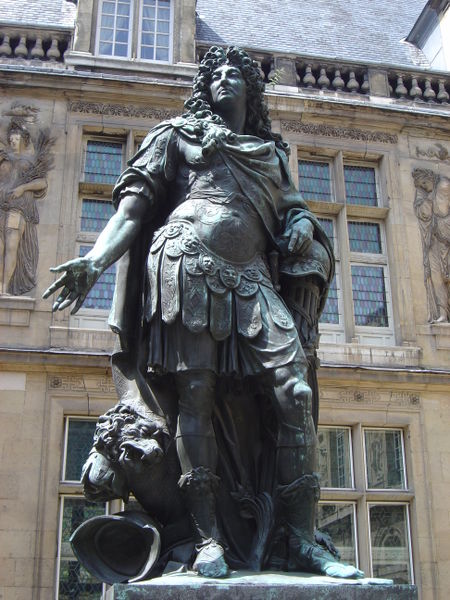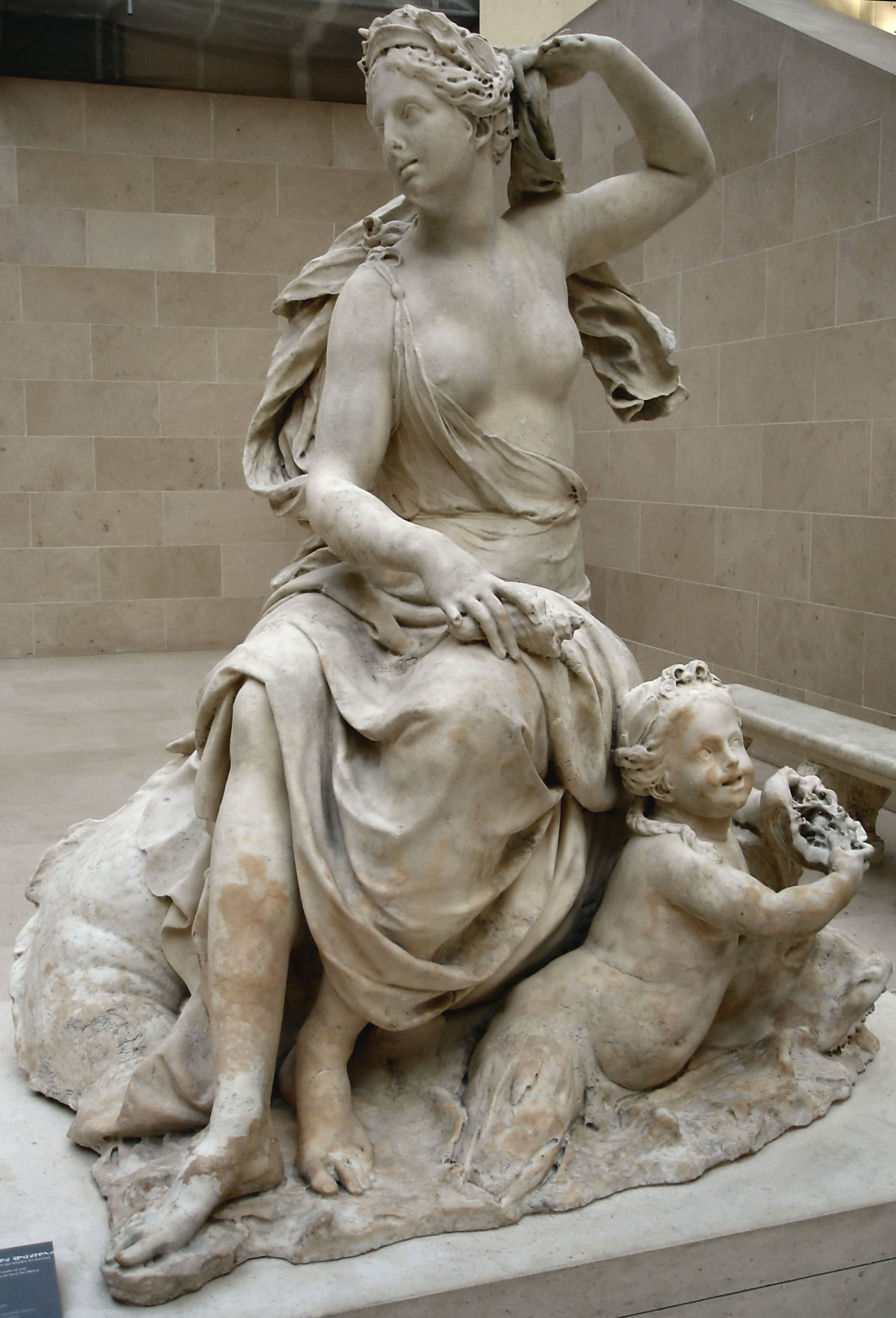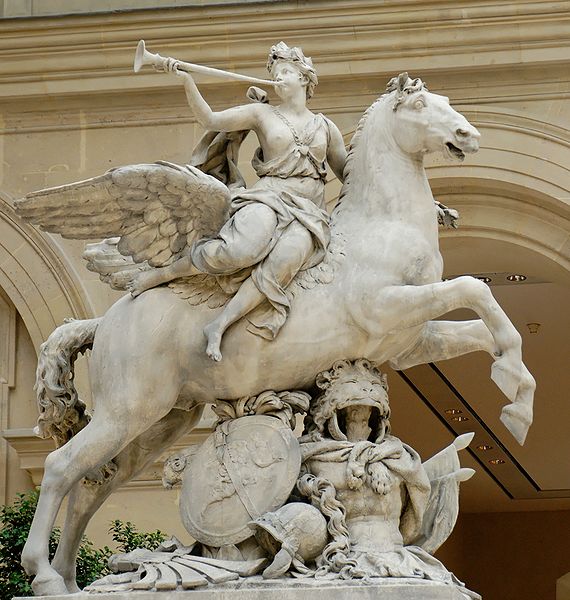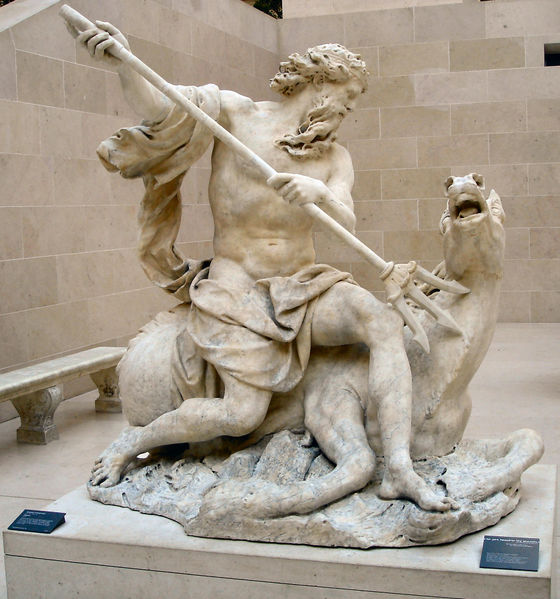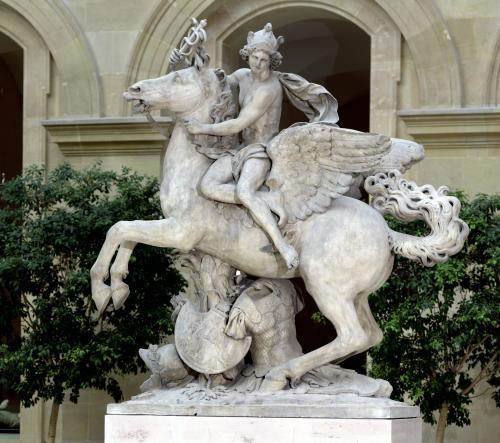<Back to Index>
- Economist Ludwig Heinrich Edler von Mises, 1881
- Sculptor Charles Antoine Coysevox, 1640
- 1st President of Mexico Guadalupe Victoria (José Miguel Ramón Adaucto Fernández y Félix), 1786
PAGE SPONSOR
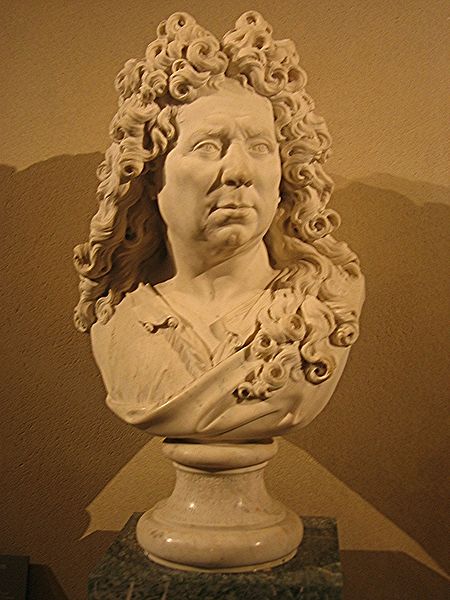
Charles Antoine Coysevox (September 29, 1640 – October 10, 1720), French sculptor, was born at Lyon, and belonged to a family which had emigrated from Spain. The name should be pronounced quazevo.
He was only seventeen when he produced a statue of the Madonna of considerable merit; and having studied under Louis Lerambert and having further trained himself by taking copies in marble from Roman sculptures (among others from the Venus de Medici and the Castor and Pollux), he was engaged by the bishop of Strasbourg, Cardinal Fürstenberg, to adorn with statuary his château at Saverne (Zabern).
In 1666 he married Marguerite Quillerier, Lerambert's niece, who died a year after the marriage. In 1671, after four years spent working at Saverne, which was subsequently destroyed by fire in 1780, he returned to Paris. In 1676 his bust of the king's painter Charles Le Brun obtained admission for him to the Académie Royale. A year later he married Claude Bourdict.
For niches on the façade of Jules Hardouin - Mansart's royal chapel at Les Invalides he was commissioned to produced a Charlemagne as a pendant to Nicolas Coustou's Louis XI. On the upper storey stand his Cardinal Virtues.
In consequence of the coordination of official arts that was exercised by Charles Le Brun between the years 1677 and 1685, he was employed on behalf of Louis XIV in producing much of the decoration and a large number of statues for Versailles; and he afterwards worked, between 1701 and 1709, with no less facility and success, for the Château de Marly, subsequently largely abandoned, then destroyed in the Revolution. He executed Justice and Force and the River Garonne at Versailles. Among his works from Marly are the Mercury and the equestrian Fame (1702) and four groups commissioned for the "river" in the château's park; La Seine and its pendant at the head of the cascade, La Marne, Neptune and Amphitrite.
Models in weather resistant stucco were set up in 1699, replaced by
marbles when they were finished in 1705. The groups were seized as biens nationaux in 1796 and dispersed: the Seine and Marne went to Saint-Cloud and the Neptune and Amphitrite went to Brest in 1801. In
his portrait sculptures the likenesses were said to have been
remarkably successful; he produced portrait busts of most of the celebrated men of his age, including Louis XIV and Louis XV at Versailles, Colbert (the kneeling figure of his tomb at Saint - Eustache), Cardinal Mazarin (in the church of the Collège des Quatre-Nations), the Grand Condé (in the Louvre), Maria Theresa of Austria, Turenne, Vauban, Cardinals de Bouillon and de Polignac, the duc de Chaulnes (National Gallery of Art, Washington); Fénelon, Racine, André Le Nôtre (church of St-Roch); Bossuet (in the Louvre), the comte d'Harcourt, William Egon Cardinal Fürstenberg as well as Charles Le Brun (in the Louvre). Coysevox died in Paris, 10 October 1720. Besides
the works given above he carved about a dozen funeral monuments,
including those to Colbert (at Saint - Eustache), to Cardinal Mazarin (in
the Louvre), and to the painter Le Brun (in the church of Saint
Nicholas-du-Chardon). Between 1708 and 1710 Coysevox produced three further sculptures for Marly, a Pan (now in the Louvre), flanked by a Flora and a Dryad (in the Tuileries Gardens). A highly finished terracotta bozzetto or reduction of the Dryad, signed and dated 1709, is in the Ashmolean Museum, Oxford. Among the pupils of Coysevox were Nicolas and Guillaume Coustou.
